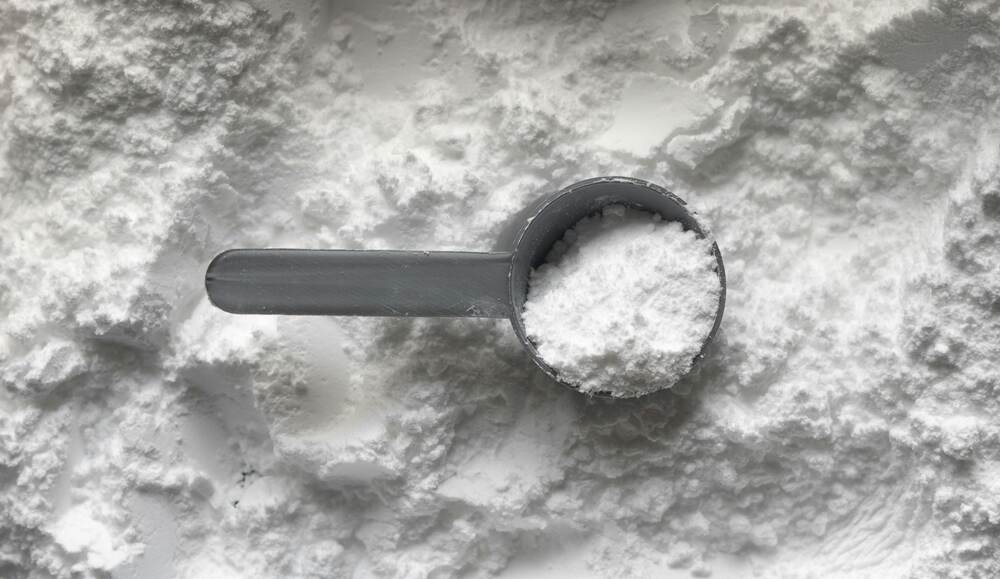Introduction
Creatine is a famous dietary enhancement known for its capability to upgrade athletic execution, muscle strength, and general practice limit. Likewise, with any enhancement, clients might ponder its time span of usability and whether creatine can expire. In this article, we will investigate the dependability of creatine, factors impacting its life span, and rules for capacity to guarantee ideal viability.
Understanding Creatine
Creatine is a normally happening compound tracked down in modest quantities in specific food sources and orchestrated in the body from amino acids. It assumes an urgent part in the development of adenosine triphosphate (ATP), the essential energy cash of cells. Creatine is put away in muscles and delivered during extreme focus exercises, giving a quick wellspring of energy.
Creatine supplementation has acquired ubiquity among competitors and wellness fans because of its likely advantages, for example, further developed strength, expanded bulk, and improved practice execution. The most well-known type of creatine utilized in supplements is creatine monohydrate, known for its adequacy and security.
Does Creatine Expire?
Creatine, in its unadulterated structure, is a steady compound with a long timeframe of realistic usability. It doesn’t go through substance debasement or decay under typical capacity conditions. Notwithstanding, in the same way as other different enhancements, creatine items frequently accompany a lapse date. The expiration date shows the period during which the item is supposed to stay at its most elevated power.
When Does Creatine Expire
Creatine commonly doesn’t have a particular lapse date whenever put away appropriately in a cool, dry spot away from direct daylight. In any case, over the long run, it might corrupt into creatinine, lessening its viability. To guarantee strength, use creatine in something like two years of procurement. Continuously check for any indications of decay, like a foul scent or uncommon staining. If all else fails, supplanting it is prudent. It’s critical to take note of that singular items might have explicit suggestions, so checking the bundling for maker rules is suggested.
Factors Influencing Creatine Stability

The stability of creatine over time can be affected by a number of factors. Understanding these variables can assist clients in arriving at informed conclusions about the capacity and utilization of creatine supplements.
Moisture and Humidity: Dampness and mugginess can prompt the amassing or building up of creatine powder. While this isn’t guaranteed to show decay, it might influence usability and dissolvability. It is fundamental to keep creatine holders firmly fixed in a dry climate to forestall dampness retention.
Temperature: Creatine is for the most part stable at room temperature. Nonetheless, openness to outrageous intensity or delayed stockpiling in warm circumstances can affect its quality. Putting away creatine in a cool, dry spot away from direct daylight is prudent to keep up with its soundness.
Light Exposure: Delayed openness to light, particularly daylight, can add to the debasement of specific mixtures. While creatine itself isn’t profoundly delicate to light, it is prescribed to store creatine supplements in misty compartments to limit light openness.
Container Quality: The nature of the compartment or bundling can affect the steadiness of creatine. Impenetrable, obscure compartments that safeguard the enhancement from dampness and light are best. Picking trustworthy brands known for quality bundling can add to the life span of the item.
Contamination: Cross-contamination can occur if the supplement comes into contact with contaminants or if the scoop or utensil used to measure creatine is not clean. Guaranteeing appropriate cleanliness and utilizing clean utensils can forestall likely issues.
Advantages of Creatine For Fitness Freak
Creatine offers various benefits for wellness devotees. First and foremost, it upgrades ATP recovery, helping energy during extreme focus exercises, prompting further developed strength and execution. As a result, there will be more muscle mass and better recovery, which will make it possible to train harder and more frequently. Creatine likewise brings water into muscle cells, advancing cell hydration and volumization, and establishing a more anabolic climate for muscle development. Also, it has been displayed to diminish muscle cell harm and aggravation, helping with quicker recuperation. Furthermore, creatine supplementation is practical and very much endured, making it a helpful and safe decision for people trying to upgrade their wellness gains.
Storage Guidelines
To amplify the timeframe of realistic usability and viability of creatine supplements, think about the accompanying stockpiling rules:
Keep it Dry: Dampness can prompt clustering, influencing the surface and solvency of creatine powder. Store creatine in a cool, dry spot and try not to open it to sticky circumstances.
Avoid Extreme Temperatures: Outrageous intensity can affect the nature of creatine. It should be kept at room temperature and kept away from temperatures that are higher than the recommended range.
Use airtight containers: Pick sealed shut compartments to forestall openness to air, which can add to oxidation. Ensure the compartment is fixed firmly after each utilization.
Choose opaque containers: Hazy compartments safeguard creatine from light openness. Consider moving creatine to a dim, dark holder on the off chance that the first bundling is straightforward.
Check for Clumping: While clustering isn’t guaranteed to show deterioration, it can influence usability. Tenderly separate any bunches that might shape in the powder.
Follow Expiration Dates: Stick to the lapse date referenced on the creatine supplement. Even though creatine is usually stable, it works best when used within the recommended time frame.
Does Expired Creatine Still Work

Expired creatine might, in any case, be protected from consumption, however, its viability could be reduced over the long run. The stability of creatine is determined by the conditions in which it is stored, and degradation may occur, lowering its potency. While it probably won’t present well-being gambles, its lessened viability could affect exercise execution. For best results, you should stick to the recommended expiration date. Although there is no guarantee that using expired creatine will be harmful, it is recommended to replace it with a new, unopened product for the best results during exercise and muscle building.
Conclusion
In conclusion, unlike perishable foods, creatine is a stable compound with a long shelf life and does not typically “expire.” Be that as it may, factors like dampness, temperature, light openness, and holder quality can impact its dependability over the long run. By adhering to appropriate capacity rules and utilizing creatine within its suggested time span, people can guarantee that they are getting the greatest advantages from this broadly acclaimed supplement. Similarly as with any dietary enhancement, talking with a medical care proficient or a nutritionist is prudent, particularly for people with prior ailments or those taking prescriptions.
FAQ
Can You Take Creatine Without Working Out
Indeed, people can take creatine without working out, as it might in any case offer a few advantages. Creatine is known to help with high-intensity activities by increasing muscle size and strength. While its maximum capacity is acknowledged during exercise, a few examinations recommend potential mental and neuroprotective advantages even without actual work. Be that as it may, talking with a medical care proficient is prescribed to guarantee propriety for individual well-being objectives and conditions. Normal activity is the essential method for augmenting creatine’s benefits.
Does Creatine Make You Constipated
No, creatine by and large doesn’t cause blockage. It is a misunderstanding. Creatine is a normally happening compound tracked down in limited quantities in specific food varieties and is likewise combined by the body. It is a well-known supplement among competitors and wellness fans because of its part in further developing energy creation during extreme focus workouts. Even though taking creatine can sometimes lead to dehydration, staying hydrated is absolutely necessary. In the event that people experience obstruction, it is more probably connected with variables, for example, deficient water admission or dietary decisions as opposed to creatine itself. It’s pivotal to keep up with satisfactory hydration and a fair eating routine while utilizing creatine.
How Much Creatine Should I Take Calculator
It’s prudent to begin with an everyday portion of 3-5 grams of creatine monohydrate, as this is the most investigated and demonstrated structure. There’s no requirement for a complicated number cruncher; a standard portion is powerful for most people. Notwithstanding, some might settle on a stacking period of 20 grams each day for the initial 5-7 days to soak muscle stores rapidly. Continuously talk with a medical services professional prior to beginning any supplementation, as individual variables like weight, movement level, and ailments can impact the best dose. Make sure to remain all around hydrated while utilizing creatine to expand its advantages.

